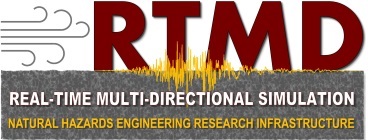NEESR: Reserve Capacity in New and Existing Low-Ductility Steel Braced Frames
Project Overview
The proposed research aims to understand at a fundamental level the influence of reserve capacity on the seismic performance of low-ductility steel concentrically-braced frames up to the point of collapse. This understanding will enable the development of cost-effective strategies for accurately assessing existing structures and confidently designing new structures in this important sector of the national infrastructure.
Low-ductility steel braced frame structures comprise a significant portion of the national building stock, yet their inelastic seismic response is not well understood. This lack of understanding raises serious concerns regarding expected performance during a maximum considered earthquake (MCE) event, while the high cost alternative of ductile detailing prevents a straightforward conceptual solution to the problem. In high-seismic regions, there are too many existing buildings to fix, and in moderate-seismic regions, there are no rational alternatives to ductile detailing. To address this problem, fundamental new knowledge is imperative to establish whether low-ductility braced frames can survive a major earthquake through inherent redundancy or reserve capacity. This critical new knowledge will transform approaches for design of new buildings in low and moderate seismic regions and for evaluation of existing buildings in all seismic regions of the United States.
Researchers
Principal Investigator
- Larry Fahnestock – UIUC
Co-Principal Investigator
- Eric Hines – Tufts University


